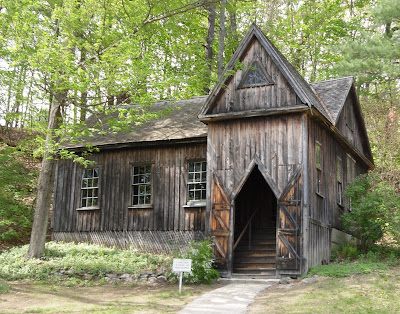REINTERRED HERE JUNE 2006'
Emerson's huge slab of granite.
'RALPH WALDO
EMERSON
BORN IN BOSTON MAY 1803
DIED IN CONCORD APRIL 27 1882
THE PASSIVE MASTER LENT HIS HAND
TO THE VAST SOUL THAT O'ER HIM PLANNED'
The above two-line quotation is from Emerson's poem 'The Problem'.
'LIDIAN
Wife of Ralph Waldo Emerson,
Wife of Charles & Lucy (Cotton) Jackson.
Born on 20th September 1802, close by
Plymouth Rock, as she loved to remember.
Died November 30th 1892 in Concord.'
Emerson's second wife (see post above).
'HARRIETT MILFORD STONE LOTHROP
MARGARET SIDNEY
THE CREATOR OF THE FIVE LITTLE PEPPERS
ALWAYS A LOVER OF AND WORKER FOR CHILDREN'
Lothrop (1844-1924) - as 'Margaret Sidney' (see the post above) - wrote children's stories.
As this marker states, Lothrop was the founder of the Children of the American Revolution. Had the marker not been there, it would have been difficult to find the grave.
The Alcott family plot.
Louisa May Alcott.
Edmund Hosmer (1798-1881) was a Concord farmer who was a friend of Emerson and Thoreau who was associated with the Transcendentalists and had helped Thoreau in the construction of his cabin.
'EPHRIAM WALES BULL
THE ORIGINATOR OF THE CONCORD GRAPE
BORN IN BOSTON MAR 4 1806
DIED IN CONCORD SEPT 26 1806
HE SOWED OTHERS REAPED'
Presumably the final line refers to the fact that Bull, a neighbor of Bronson Alcott's - thanks to Thomas Jefferson - was unable to patent his invention, so lost out big time. The story of this is in an essay in Paul Collins's Banvard's Folly: Thirteen Tales of Renowned Obscurity, Famous Anonymity, and Rotten Luck (London: Picador, 2001).
'ELIZABETH PALMER PEABODY
1804-1894
A TEACHER OF THREE GENERATIONS OF CHILDREN,
AND THE FOUNDER OF KINDERGARTEN IN AMERICA.
EVERY HUMAN CAUSE HAD HER SYMPATHY.
AND MANY HER ACTIVE AID.'
Sophia Hawthorne's sister is buried far from Authors' Ridge.


























































